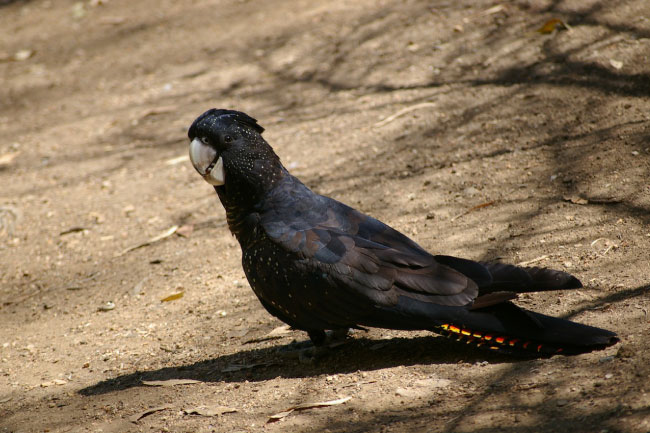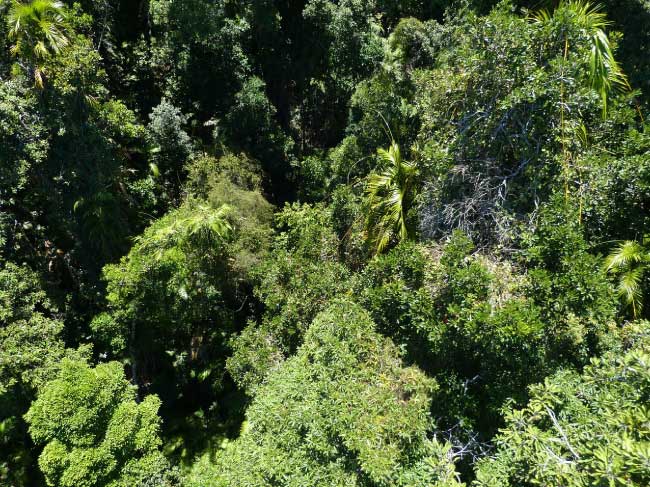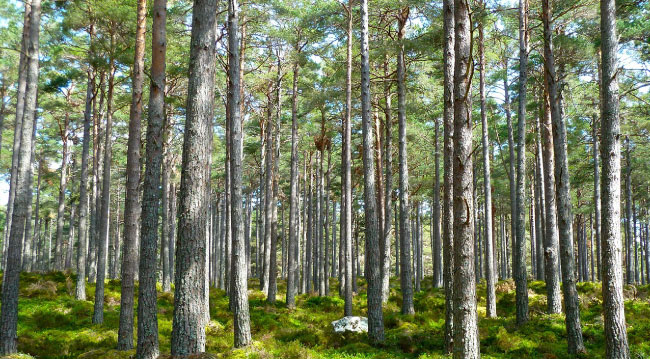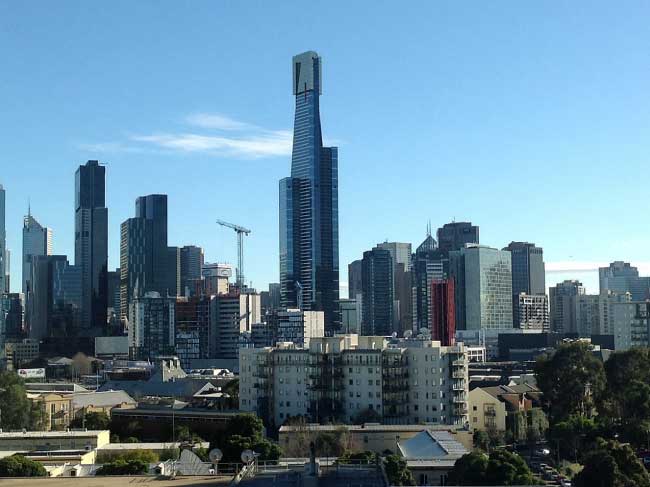What better way is there of making one’s mark on the planet than planting a tree? Travel writer Jo Walker enjoys some fine Australian hospitality, and gets her hands dirty sowing the seeds of a new forest…
[mc4wp_form]
Tree Planting in Australia
With mud encrusted fingers, I gently lowered the fragile sapling into the ground. After refilling the hole with a few scoops of warm earth, I carefully supported the little plant between two miniature bamboo stakes and a protective cardboard casing. An unexpected wave of tenderness washed over me as I gazed at the tiny emerald leaves fluttering in the breeze. I had planted my first tree.

Arriving at the bustling coach leaving Melbourne the previous day, I’d had no idea what I was about to become a part of, and even less of an idea of the impact it would have on me.
As hordes of adults and children swarmed excitedly around the vehicle, loading bulging packs and colourful food supplies, I glanced uneasily at the scruffy, half-empty rucksack resting at my feet. My spare pants, outdated camera and flimsy toothbrush suddenly seemed shamefully insufficient in sight of the endless stream of industrial carrier bags passing me.
‘Hakuna matata’, I thought to myself and, picking up my rucksack, I climbed aboard.
Lentil as Anything
A week earlier I had paid my first of many visits to Melbourne’s flagship restaurant, Lentil as Anything. Founded by Shanaka Fernando, the ethos of this ‘pay as you feel’ restaurant is to create thriving community spaces that bring delicious, wholesome meals to all, regardless of socio-economic status.
It was there that I learned of the Yarralinks tree planting weekend. Run in collaboration between Lentil as Anything and several other local organisations, this annual event brings city dwellers and rural farmers together in an effort to rejuvenate the depleting number of native trees in Victoria’s Wimmera district. The experience is also intended to bridge the gap between recently settled immigrants and local Australian people.
Funnily enough, it is only with the benefit of hindsight that I am able to give such a lucid description of the purpose of the trip. Having recently moved to Australia at the time (and thus raring to meet new people), I had developed the impulsive tendency of signing up for every opportunity that came my way, without taking a blind bit of notice of the details. I would be rummaging in my bag for a biro from the moment I heard the words ‘are you interested’.

A week later and there I was, sat amidst a crowd of unfamiliar faces as we trundled out of the Melbourne metropolis and into the realm of the rural. As the buildings dissolved into a flitting blur of lime green and glistening gold, I leant back in my chair and smiled. There was something incredibly liberating about having no idea where I was going, let alone who I was going there with.
The tinny tune of the radio and low murmur of passengers merged together, occasionally punctuated by the excited squeal of a child. As the fields flew by, I surrendered to the soothing rhythm of the road and closed my eyes.
Rupanyup
A few hours passed before we arrived in the tiny town of Rupanyup. As we filed down the coach aisle I glimpsed the flock of fleeced farmers waiting below. With a population of 500, it appeared the entire town had gathered to witness our arrival. Like spies off a pirate’s plank, we were chivvied one by one off the coach and into the sea of slouch hats and grubby boots below.
As I was unwittingly swept through the crowd, my eyes met with flushed cheeks and creased smiles at every turn. Enveloped in the cacophony of roaring laughter and rich twang of broad Australian accents, I grinned as traces of the countryside aroma of fresh manure crept into my nostrils.
The half an hour that followed was delightfully chaotic, as the process of matching city volunteers with their respective host families ensued. While clipboard-bearing event organisers hollered name after name, I cast my eyes upwards. The sky had never looked so huge. In the absence of the soaring skyscrapers of the city every inch of its blue expanse could be seen and, as I marvelled at its celestial magnitude, all surrounding commotion melted away.
Moments later I was jolted back to reality by the sound of my own name being called just feet away. As I cheerfully approached the man to whom the bellowing voice belonged, he began again. ‘JOOOOOO WALKERRRR!’ he boomed directly into my face, as I lifted a tentative hand to indicate my identity.
‘Oh, sorry darl’, didn’t mean to shout in ya face!’ he exclaimed, before placing a bulky, olive hand on my shoulder and guiding me through the now dispersing crowd. I was deposited alongside two other girls, as an elderly lady walked towards us. She had light auburn hair and a gentle smile and, as she welcomed us to her hometown, I felt gargantuan aside her tiny frame.

Hospitality
Marg had lived in Rupanyup for all eighty-two years of her life. A much loved member of the community, she was best known for her extraordinary baking skills. Having won countless competitions, Marg took great pleasure in encouraging others to sample her finger-licking treats, and we were no exception. When we arrived at her house, we were greeted by cakes in abundance. Atop an aging floral tablecloth lay a spread fit for royalty. There was angel cake, lemon cake, chocolate cake, black forest cake, coffee cake and more. You name it, Marg had baked it.
Later that evening as we sat, tummies bulging, we listened to stories from Marg’s life. She was a fascinating woman, and her tales kept us entertained for hours. As the evening eventually drew to a close, Marg suddenly hurried out of the room. Moments later she returned, beaming.
‘The electric blankets have warmed your beds nicely girls. Don’t forget to turn them off before lights out’. The three of us looked at each other in disbelief. Marg’s hospitality seemed to know no bounds.
Five minutes later, as I snuggled into a cosy, warm cocoon, it was hard to believe I was in the house of a stranger. I could not have felt more at home.
The next morning we rose with the birds. We had a long day ahead of us, and Marg was insistent on filling our tummies before we headed to the fields. After a hearty breakfast we left, armed with cake-crammed lunchboxes, and headed to the tree planting site.
We reconvened with the other volunteers at the edge of vast grassland. As we gathered inquisitively around an array of objects (some familiar, others not), the farmer in charge strode over. Before demonstrating what we would be doing, he first explained the conservational purpose of the weekend.
Buloke Trees
Due to excessive clearing for cereal cropping and pasture development, many of Australia’s native trees have suffered significant depletion. One such tree is the Buloke, a species of ironwood tree that is seriously threatened by farming practices. Bulokes also provide a crucial dietary resource to the Red-tailed Black Cockatoo, an endangered bird whose survival is in jeopardy due to an increasing lack of food.
Our mission was simple; to plant a few thousand baby Bulokes over the course of the weekend. However, having never before sown a seed in my life, I found the collection of alien apparatus at our feet baffling. The function of the gardening gloves and trowels were clear enough. The stick bundles and piles of white boxes were a tad more confusing.
Luckily, the farmers were clearly accustomed to dealing with dirt-averse city dwellers, and spent the next half an hour delivering the ‘Idiot’s Guide to Tree Planting’. I listened intently as the farmer explained that the sticks would support the young tree until its anchor roots had grown, while the white casings would protect it throughout the formative stages of its development.
During the practical demonstration I found the sight of these infant trees, along with their miniature bamboo stand aids, completely endearing. Nobody seemed to share my thoughts, but I chuckled quietly to myself as I envisioned them one day blossoming into bolshie teenage trees and casting their stabilisers aside in a fearless pursuit of independence.
Tree Planting
Once we had been fully inducted into the art of tree planting, we were each provided with the necessary equipment and let loose on the land.
It was during those initial hours that I first felt a surge of compassion for the new trees. Mortified by the horticultural holocaust ravaging the species, I felt glad to be helping combat the problem. As we planted tree after tiny tree, my optimism for the future of the species grew.
After several hours, I paused to look back at our work. The previously bare pasture was now adorned with an ornamental chain of pearly white cartons gleaming in the afternoon sun. I felt heartened by the thought of the freshly sown Bulokes encased within each and every one of the hundreds of boxes that lay before me, winding across the field like a ribbon.
Throughout the weekend I became convinced of the restorative quality of conservation work, not just for the natural environment, but for us too. It was physically exhausting yet psychologically invigorating. For us city dwellers in particular, the surge of Vitamin D was an added bonus.
Alongside the tree planting itself, I also took great delight in the human interactions unfolding all around me. Our group of volunteers was extraordinarily diverse yet, amidst the vibrant tapestry of different cultures, emerged a powerful sense of community and shared purpose that surpassed all perceived divides.
The majority of volunteers that had come from Melbourne belonged to the city’s ever-growing population of Sudanese refugees. One of the key organisations involved in coordinating the annual event is SAIL (Sudanese Australian Integrated Learning), a not-for-profit program that welcomes Sudanese families to the city and supports them to settle in to unfamiliar surroundings.
Amongst the mixed group I also encountered volunteers from Sri Lanka, Canada, New Zealand, Myanmar, Ireland, Venezuela and Taiwan. Not to mention an ample helping of native Australians! Being part of a group of all ages, races and backgrounds, uniting in a cross-cultural endeavour to nurture the land upon which we live, was genuinely refreshing. For me, this vibrant assortment of people working together embodied the essence of our universal, shared humanity.
As the weekend drew to a close, the local people of Rupanyup hosted a celebratory country dance for everyone that had contributed to the tree-planting weekend. Held at the town’s community centre, it was without doubt one of the best parties I have ever been to. The hall was an explosion of colour, jam-packed with fatigued yet beaming faces. With food provided by Lentil as Anything, volunteers shared stories of the weekend’s antics over a delicious vegan feast.
Return To Melbourne

I returned to Melbourne in high spirits. For an impromptu trip, the weekend had been a roaring success, and I promised myself I would continue with the spur-of-the-moment ‘sign up for everything’ approach. Flopping onto the bed at home I yawned, unfurling my aching limbs. As I did so, my thoughts turned to the unfurling limbs of the baby Bulokes as they spread their roots into the bed of soil beneath them.
As my eyelids grew heavier I made a silent pledge to return to see the trees someday. And with that, I drifted off, with visions of well-nourished cockatoos dancing in my head.
By Jo Walker
Jo Walker is a travel writer by heart, with many years of globetrotting under her belt. She is also a poet and motivational blogger.
